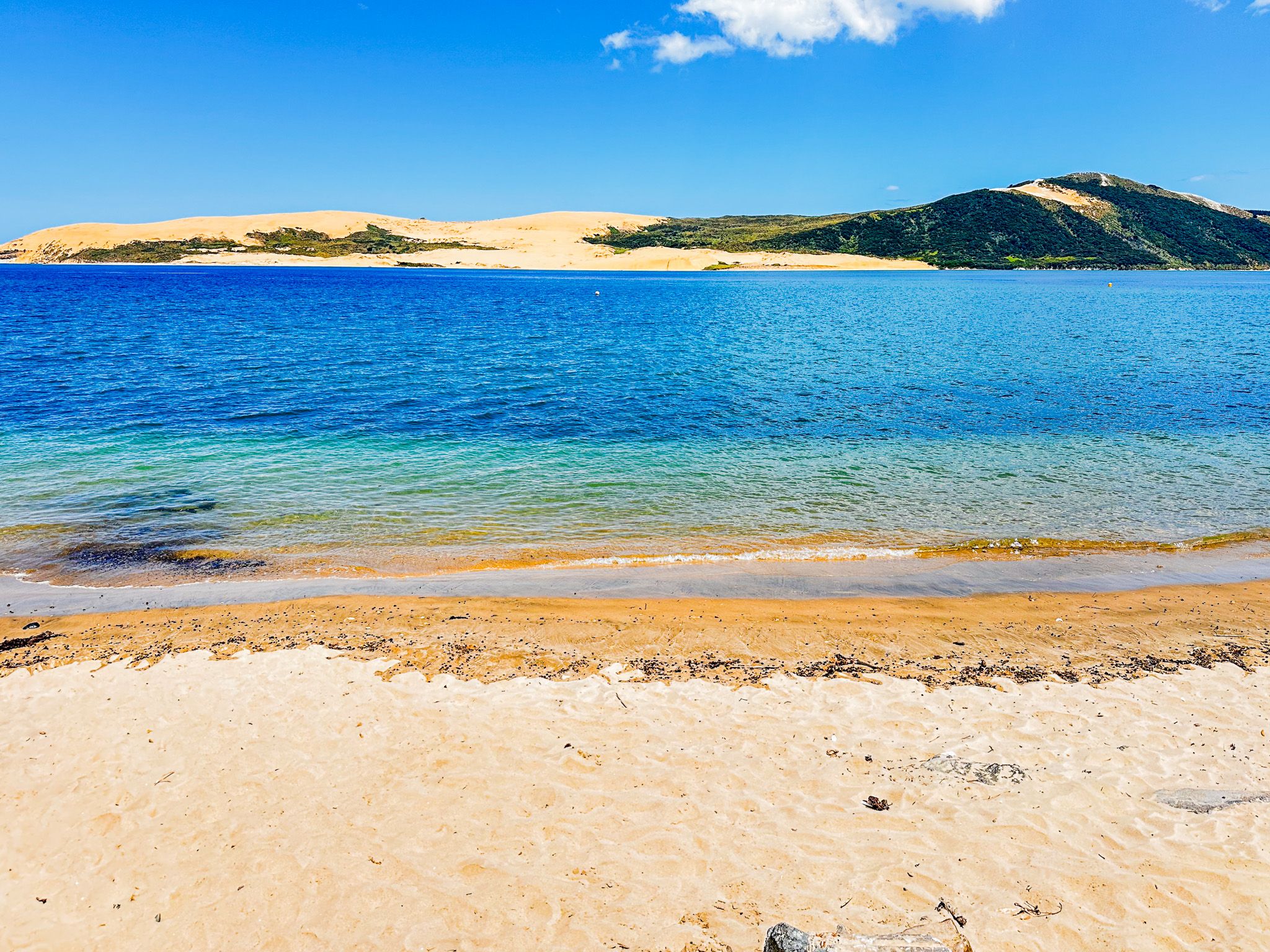Discover Opononi and Ōmāpere
Located at the southwest end of Hokianga Harbour, Opononi and Ōmāpere are two charming towns connected by State Highway 12. This highway runs along the harbour's southern side, with Opononi positioned to the north of Ōmāpere.
Although distinct, these towns are nearly joined by housing developments that overlook both the highway and the coast. The area is known for its striking white to gold sand beaches and piers, as well as a range of accommodation options, shops, cafes, and restaurants. Across the harbour, you can see the impressive 150-metre-high dunes that mark the entrance to Hokianga Harbour.
Historical Background
One of the earliest settlers in the Hokianga was John Martin, who arrived in 1827 aboard the Governor Macquarie. According to local accounts, tensions were high at the time, and some Māori groups opposed contact with Europeans. A young Māori woman named Kiriora swam out to the anchored ship to warn Martin of possible danger. The two later married and, in 1832, purchased land along the beach at Ōmāpere, where they became part of the early settler community. Martin and Kiriora later expanded their holdings at Hokianga Harbour's South Head, where they built a signal station to guide ships safely over the Hokianga bar, saving many lives until its closure in 1951.
In 1855, John Webster bought land at Opononi. He established a store, a kauri gum trading post, and a pier to support milling activity and the development of farming.
Development and Growth
By 1876, Ōmāpere had developed further, with more services, including a hotel, emerging around Martin’s farm, which had become the hamlet of Pakia. However, Ōmāpere was the preferred name and was officially adopted in 1874. In 1894, Webster sold his land in Opononi, and the gum store was converted into a hotel. The construction of the highway in the 1930s facilitated easier development along the coast, linking the towns more closely.
Opo the Dolphin
Opononi gained fame as a tourist destination thanks to Opo, a bottlenose dolphin who became a local sensation in 1955/56 by socialising with children at the beach. Initially named Opononi Jack, Opo was likened to another famous dolphin, Pelorus Jack.
Both dolphins were associated with the mythical figure Kupe, the Polynesian discoverer of Aotearoa, New Zealand, who first arrived in Hokianga. According to legend, a dolphin was Kupe’s messenger, destined to return in times of trouble. Today, a statue memorialises Opo, and the gravesite is marked in front of the Opononi War Memorial Hall.
Getting to Opononi and Ōmāpere
To reach Opononi and Ōmāpere, take State Highway 12, which connects these towns along the southern side of Hokianga Harbour. The towns are a 3.5-hour drive from Auckland (268 km) and 90 minutes from Dargaville (92 km).
Other nearby places to explore include Waimamaku Beach (Kaikai Beach), Waiotemarama Waterfall, Koutu Boulders and Rawene.

